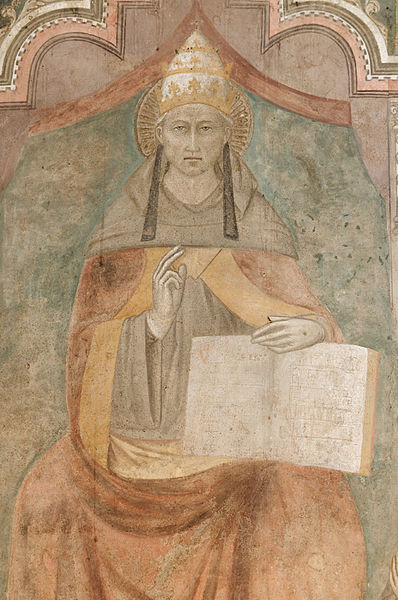Here’s a thought, just a thought, a theory, maybe just a hypothesis:
On December 20, 2010, Pope Benedict gave a compelling speech to the cardinals and bishops in which he reviewed the Year for Priests and talked pretty frankly about the abuse crisis. In this context, he offered up a quotation from St. Hildegard von Bingen, where she gives voice to the Bride of Christ:
For my Bridegroom’s wounds remain fresh and open as long as the wounds of men’s sins continue to gape. And Christ’s wounds remain open because of the sins of priests. They tear my robe, since they are violators of the Law, the Gospel and their own priesthood; they darken my cloak by neglecting, in every way, the precepts which they are meant to uphold; my shoes too are blackened, since priests do not keep to the straight paths of justice, which are hard and rugged, or set good examples to those beneath them. Nevertheless, in some of them I find the splendour of truth. (Italian: splendore della verità)
She’s discussing the sins of priests and how they mar the face of Christ. Yet some priests remain faithful and in them is found the splendor of truth. The phrase struck me because it is the title of St. John Paul II’s most significant encyclical. In fact, a few paragraph later, Benedict highlights the significance of the encyclical Veritatis Splendor as denouncing with “prophetic force” the relativist moral philosophies that led to the pedophilia crisis in the first place: “The effects of such theories are evident today. Against them, Pope John Paul II, in his 1993 Encyclical Letter Veritatis Splendor, indicated with prophetic force in the great rational tradition of Christian ethos the essential and permanent foundations of moral action.”
What’s interesting about this to me is that Benedict seems to indicate, by putting these two things so close together—the Hildegard quote and the encyclical’s title—that it seems as if he is indicating that the encyclical was written precisely to address the sins of priests and that the title itself comes from St. Hildegard.
Just to make sure I wasn’t making things up, I checked the other languages. The speech was given in Italian and indeed in both the Hildegard quote and the first line of the encyclical, the phrase “splendore della verità” is used. (The title of an encyclical comes from its first line.) Now, of course, the encyclical belongs to the reign of St. John Paul II, but Ratzinger as head of the Congregation for the Doctrine of the Faith certainly had a role in its drafting. In George Weigel’s magisterial biography of John Paul II, the author discusses possible contributors to Veritatis Splendor and states, “The extensive references to St. Augustine and the themes from St. Bonaventure reflect longstanding interests of Cardinal Joseph Ratzinger” (p. 691).
The phrase, “splendor of truth,” is very rare. However, I did track down one use of it in the Collect (opening prayer at Mass) for the Monday after Epiphany: “…that he who appeared among us as the splendor of truth…” It shows up in Origen, St. Ambrose, St. Augustine, St. Leo the Great and in St. Bonaventure’s mystical writings, but the phrase is still very rare. The fact that Benedict XVI himself pairs up the title of the encyclical with the Hildegard quote and adds a discussion the “sins of priests” in both segments is more than a little remarkable.
So, to summarize my hypothesis, it seems to me that Pope Benedict XVI is indicating 1.) the title for Veritatis Splendor originated from a text by St. Hildegard and that 2.) the encyclical was specifically directed against the sins of priests, namely the abuse crisis. What do you think?


